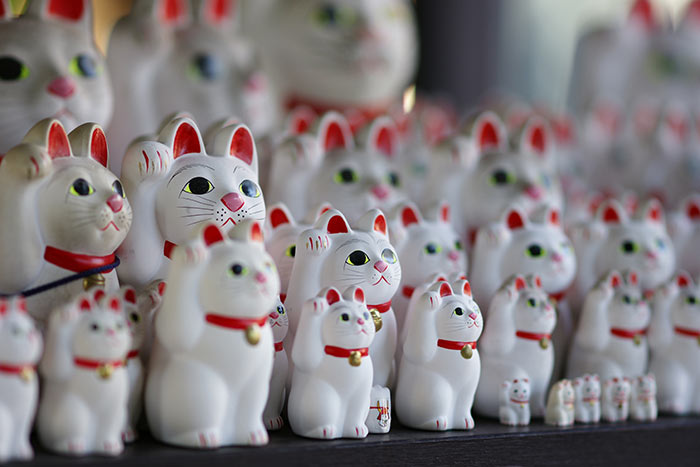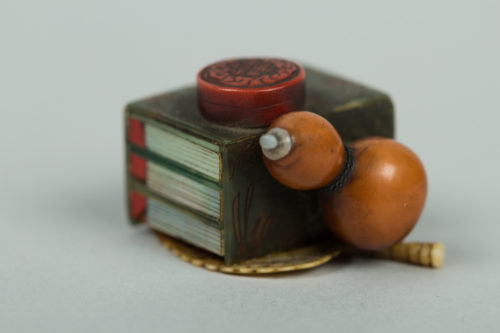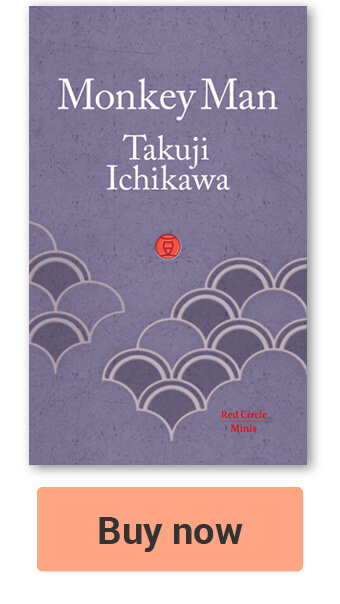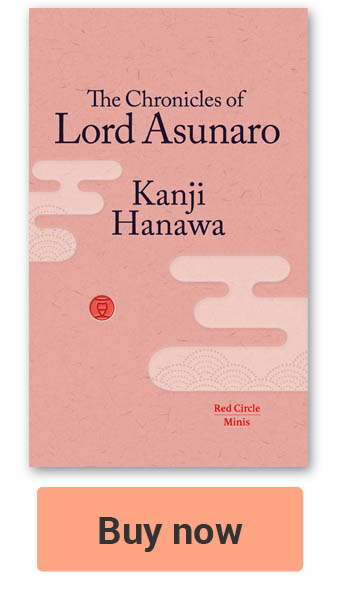 Moji-kaki doll made by Tanaka Hisashige. Photo: Masayuki Inamasu Wikimedia
Moji-kaki doll made by Tanaka Hisashige. Photo: Masayuki Inamasu WikimediaJ
apan is renowned for embracing robot technology in the workplace and has enjoyed a long love affair with dolls and robots of all kinds, whether factory-bound, practical, impractical, imagined, drawn or animated. Japan has always valued efficiency, craftsmanship, diligence and hard work – be it conducted by man, machine or even a madcap science fiction writer creating uncomfortable and bizarre alternative realities.
Even though she lacked the technology and resources to save her people from military defeat and occupation, Japan has come to rely on robots time after time to save her economy from impending doom.
This was the case, for instance, when the value of the yen rose dramatically after the Plaza Accord; and when other nations followed its modernisation programme and caught up. Robots even provided assistance after Japan’s massive economic bubble burst and the tsunami hit in 2011 causing the nuclear disaster in Fukushima.
Since the end of the Second World War, robots have also consistently been coming to the rescue of Japan in the nation’s creative media – most notably in book, manga, anime and film.
They are also expected to do so once again as Japan’s population ages and shrinks; only in this event these new robots will take the form of Carebots such as Robobear.
As a nation, Japan has no qualms about its readiness to embrace robot technology. Some OECD measures indicate that Japan has more industrial robots than most countries, and more Artificial Intelligence (AI) patents than any other.
The government has even written a strategy that articulates the steps it intends to take towards becoming a ‘Robotics Superpower’.
Japan’s nation building narrative is a distinctive one. Its quest to build a ‘Robot Kingdom’ can be traced back to the 17th-century and its fascination with mechanical toys. The journey has been fraught at times, and involved considerable hardships, many twists and turns, and some brutal dead ends. But its robot story mirrors its history and spans industrial, literary and popular culture. And it involves some of Japan’s most creative individuals: founders of global companies, brilliant authors, animators, toy-designers, and engineers.
Japan’s ‘official post-war narrative’ framed around technology and science, has been consciously woven into Japan’s cultural zeitgeist. But has the journey so far run as smoothly as some would have us believe?
-
- Following the Japanese brick road to the robot city
W
hile many attribute the first steps on this journey to the 17th century mechanical Japanese toys known as Karakuri Ningyo, they were by no means the world’s very first of their kind. Many examples of early automata existed in ancient Greece, China and another countries, as well as the legendary automata and robot created by Leonardo da Vinci (1452-1519). There is, nonetheless, something special about Karakuri Ningyo and their impact. Intricately designed, these beautifully clothed Japanese automata were unique. The literal meaning of their name is: trick-dolls. Though this is a little misleading since they were never seen as a threat or a hoax as they were designed to entertain, not to deceive, and the name also implies mechanical-doll.
Very different in form from the typical wooden or metallic automata or robots we are all accustomed to seeing, Karakuri Ningyo were created to resemble Noh actors, traditional Japanese entertainers, that still today perform an ancient form of musical-drama. They wear masks, beautiful kimonos, and express themselves not through facial movements, but intricate and slightly exaggerated movements.
Karakuri Ningyo can be grouped broadly into three usage categories. Those designed for: family home-entertainment; puppet theatres; and public religious events and festivals. The home-entertainment variety climbed stairs, served tea, and did traditional ink brush calligraphy.
They were the home-entertainment systems of their age. They are said to have initially been invented in Osaka, where Japan’s first famous bunraku puppet theatres were first located. They were essentially an ingenious fusion of Western watch-movement technologies and Japanese doll-making techniques.
Their popularity was increased significantly by the publication of Karakuri Books in 1730 and 1796. The 1796 book, Karakuri zui, sometimes described as Japan’s first mechanical engineering textbook, provided detailed diagrams and descriptions of how to make the automata. The influence of these books, like the automota themselves, has had long-term and significant impact on Japan, its industry; and even the wider world.
One of the most fascinating Karakuri Ningyo has to be The Yumi-iri Doji, an archer with a quiver and arrows that is programmed to fire at a target. It takes each arrow out of its quiver, looks at the target and takes aim before firing, but is programmed so that one of its four arrows misses, thereby projecting an aura of un-robot-like fallibility and a heightened sense of delight when the next arrow does hit the target.
This particular popular Karakuri Ningyo model was created by the brilliant engineer Hisashige Tanaka (1799-1881) founder of a firm called Shibaura Engineering Works, which subsequently became the global concern we know today as Toshiba.
Another Japanese multinational with Karakuri Ningyo roots is Toyota. Its founder Sakichi Toyoda (1867-1930) started out designing looms, the first of which, a wooden handloom, he patented in 1891. He and his son Kiichiro (1894-1952) improved and developed loom technology considerably allowing many Japanese firms to accelerate automation and switch from imported looms to superior local ones, made by Toyoda.
Unlike Britain where resistance to industrialisation of textile manufacturing in the 18th century gave voice to the Luddite movement, there seems to have been no similar high profile resistance to technology-driven change in Japan.
The Type G Automated Loom would become Japan’s first power-loom. Designed by Kiichiro, it incorporated mechanisms and design concepts directly from Karakuri Ningyo. And so we see an extraordinary transformation from mechanical dolls to looms by a company that would ultimately become the world’s largest manufacturer of cars.
-
- The Turk and its long-term international repercussions
I
n 1770, the Hungarian Wolfgang von Kempelen (1734-1804) created The Turk, also known as The Mechanical Turk, a chess-playing automaton designed to look magical and very unfamiliar. It was in actual fact a deception. Tickets were sold to people who wanted to play against this seated, exotic life-size wooden man-like individual with a turban. It was designed to make opponents uncomfortable and to always win. The machine moved the chess pieces using a mechanical arm, making all kinds of machine-like sounds in the process. Despite this, a master chess player was in fact hidden within.
Many people played against The Turk or saw it in action including Benjamin Franklin (1706-1790) and Napoleon Bonaparte (1769-1821). Almost all lost. Its secret and winning formula, however, was kept hidden for almost a century.
In the same way as Karakuri Ningyo has had long-term and unexpected influences, so too has The Turk. The English inventor of the power-loom Edmund Cartwright (1743-1823), which he patented in 1785, 111 years before Toyoda’s, became convinced having seen The Turk, that if a chess-playing machine could be developed so could a similar weaving machine.
Similarly, Charles Babbage (1791-1871), inventor of the mechanical computer (his Difference Engine) was also reportedly amazed and impressed by The Turk when it came to London when he was a small boy.
 1980s reconstruction of the Mechanical Turk. Photograph: Wikipedia.
1980s reconstruction of the Mechanical Turk. Photograph: Wikipedia.During The Turk’s almost one hundred year period of mass-deception, new sciences and trends in automation began to find their way into both Western and Japanese literature of the time.
Many feared the progress of science and technology. And this concern didn’t just mirror the Luddites’ anxiety over job losses; it was a deep-rooted mistrust of technology-driven change itself.
In Europe, much was changing on several fronts. Following groundbreaking research by Luigi Galvarni (1737-1798), knowledge of bioelectricity, then known as galvanism, was spreading. Michael Faraday (1791-1867) was publishing research on electromagnetic induction. The Slave Trade was banned in the United Kingdom in 1807. The first commercially successful steam-powered locomotive was created between 1812 and 1813 by John Blenkinsop (1783-1831). And in the literary world, Mary Shelley (1797-1851) published her novella Frankenstein in 1818. This was the period of revolutions – both industrial and political, thanks to the French Revolution (1789-1799).
By contrast, Japan at this time was still enjoying a relatively tranquil period, its Edo Period (1603-1868), and had cut itself off from almost all Western influences. The Japanese lived in blissful ignorance of Luddites, steam engines, Victor Frankenstein; as well as growing international angst over the seismic changes taking place in Western society.
This was a period when Karakuri Ningyo flourished by providing entertainment for the masses at home, in theatres and at major religious festivals.
Despite this isolation, Japan was still able to advance. In 1804, for instance, Seishu Hanaoka (1760-1835) performed the world’s first operation, a partial mastectomy, using a general anesthetic. His methods never reached the West; nor the attention of writers like Mary Shelley.
It would take another century before these details became widely known outside Japan with the publication in 1966 of The Doctor’s Wife, by Sawako Ariyoshi (1931-1984). Ariyoshi was a pioneering Christian female writer, and her book was based entirely on Hanaoka’s life. The novel was later made into a film in 1967 and subsequently published in English in 1978.
Western literature has long been fascinated with technology. The likes of Edgar Allan Poe (1809-1849) were fascinated by The Turk, when it came to America. His personal physician even ended up buying it.
 Cover of an edition of Edgar Allan Poe’s Maelzel’s Chess-Player.
Cover of an edition of Edgar Allan Poe’s Maelzel’s Chess-Player.Poe himself had a major literary impact on Japan. When his works started to appear in Japanese translation from around 1887, his use of science and logic to solve mysteries like The Turk, helped spawn a new approach to Japanese storytelling.
And many important Japanese authors fell under his spell. Authors like Taro Hirai (1894-1965) who created his pen name Ranpo Edogawa as a homage to Poe; and Osamu Tezuka (1928-1989), the creator of Japan’s best known fictional robot Astro Boy.
Everything would change during Japan‘s Meiji Era (1868-1912) when she suddenly opened-up to the West and entered a revolutionary-like period of rapid development and modernisation that spanned everything from sport, books and fashion, to science and technology.
Science fiction also arrived in Japan for the first time and Karakuri Ningyo quickly fell out of fashion. Many were discarded or simply forgotten in much the same way as old toys in the Hollywood animation Toy Story are.
The Meiji transformation gave rise to a degree of social angst as new unfamiliar concepts and words found their way into Japanese vocabulary. Words like shosetsu meaning Western-style novels, and the word shakai meaning society.
One of Japan’s most respected authors Soseki Natsume (1867-1916), who himself become a milestone in the evolution of robotics in Japan, described the mood of the period eloquently: “Japan was running a race with Western history: only by reaching the Western nation’s advanced stage of development could Japan regain cultural autonomy and control of its destiny”.
For some, these changes destroyed the familiar and rigid social etiquette and hierarchy of Japanese society, making expectations society had of them unclear. This extended to the realms of trust and relationships, which triggered some distinctly bizarre and disturbing novels and short stories that are still being enjoying to this day.
Doll motifs and narratives built around Doll-Love themes suddenly started appearing in the works of many leading Japanese writers. Some academics take the view that the economic and cultural shock of the period was the cause of this type of ‘sexual repression’. And that this, in turn, explained why some Japanese men had started focusing their attention on inanimate objects like dolls.
It apparently reminded them of tradition, quiet contemplation, as well as innocence: and perhaps even Karakuri Ningyo. This all took place before the word robot had even seen the light of day.
-
- The new label ‘robot’ triggers a literary response in a rapidly changing Japan
T
he play R.U.R. (Rossum’s Universal Robots) by Karel Čapek (1890–1938), written in 1920 and first performed in Prague in 1921, had a major impact in Japan in the 1920s and 30s after its arrival in translation in 1924. This was a new period in Japanese history dubbed the Showa Period (1926-1989). The industrialisation was gaining pace and the relentless development of new technologies generated creative-angst, as well as concern amongst the general population. A huge natural disaster didn’t help either.
 Image of Tokyo after the 1923 Great Kanto Earthquake. Image: Public Domain.
Image of Tokyo after the 1923 Great Kanto Earthquake. Image: Public Domain.It was by all accounts the largest urban disaster of its time. It was widely believed that it would take Tokyo decades to be returned to its former state. But in actual fact, the city was rebuilt and modernised quickly, ushering in a new era. Nevertheless it was an extraordinarily difficult and stressful period for many, and formed the basis and setting for a number of Japanese works of fiction.
At this time, science fiction was also a new and emerging literary genre. It may not have been properly defined as one, but its popularity was certainly undeniable. And this was given a significant boost on the world stage by the American publication of the science fiction magazine Amazing Stories in 1926. Its publisher, Hugo Gernsback (1884-1967) is generally credited with the first use of the term Science Fiction.
Japanese magazines would follow in its footsteps and play a critical role in the genre’s development. But it’s interesting to note, however, that poor Karakuri Ningyo didn’t get a look in.
This time round, the nation became much more exposed to the West and was actively participating on the world stage. At the 1928 Olympic games, for instance (the second Japan participated in), Japan won its first gold medals. And having defeated Russia in the Russo-Japanese War (1904-1905) Japan was growing ever more confident.
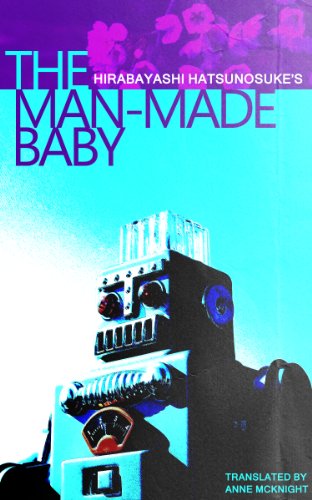 English language edition of Jinzo Ningen by Hatsunosuke Hirabayashi (1892-1932), The Man-Made Baby. Translated by Anne Mcknight and published in 2013 by Expanded Editions.
English language edition of Jinzo Ningen by Hatsunosuke Hirabayashi (1892-1932), The Man-Made Baby. Translated by Anne Mcknight and published in 2013 by Expanded Editions.R.U.R also triggered a flurry of robot stories in Japan; sometimes described by academics as “Early Showa Robot Literature”.
Jinzo Ningen (Artificial Human) written in 1928 by Hatsunosuke Hirabayashi (1892-1932) is often cited as a classic example of this genre. It is about a moga (modern girl), a married scientist and an artificial human.
Stories about Jinzo Ningen, a catch-all term that can mean robot as well as artificial or man-made human, were generally published in magazines and were popular. At least one magazine devoted a special issue to these artificial creatures that often looked just like us, but were mechanical inside.
The Robot and the Weight of The Bed (robboto to bedo no juryo) by Sunjugo Naoki (1891-1934), who the Naoki Literary Prize – one of Japan’s most prestigious literary awards – is named after, is another example from this period.
Naoki’s story, written in 1931, is about a dying man’s plan to leave a robot as a ‘companion’ for his wife after he has departed this world. It is set in the future when Japan has electrically controlled cars (not dissimilar to the electric and autonomous vehicles being developed today) designed to automatically avoid accidents. This story, however, is about a robot designed to ensure a wife remains faithful to her husband after his death in an ominous form of forced-companionship.
Other stories from this period feature enhanced or modified humans as well as robots and dolls. Robots were not considered by these Japanese authors as merely tools or slaves to serve humans; they were also seen as potential threats to human and biological life.
-
- The Four Temperaments: Do robots fit the matrix?
S
ome researchers outside Japan have tried to deconstruct robot literature, and have attempted to shed light on why and when they appear in our collective imaginations and the creative minds of authors.
Such research hasn’t relied on high-speed statistical analysis and pattern recognition algorithms. Instead its authors have resorted to good old-fashioned methodology: trips to the library, reading and research.
Their conclusions are that there are apparently, four main robot-types: tools (slaves); superiors (masters); companions (doers) and equals (enhancers).
According to these researchers, tools and superiors tend to appear during periods of massive technological change. Slave-type robots represent the fears of the average person while the superior-master robots reflect the arrogance, hubris and the perceived superiority of the leaders during these periods of uncomfortable technological transition.
Robots that act as companions or are our equals tend to appear during periods of significant social change or unrest. They are socialised robots that authors and readers find appealing when rules, roles and the long established social dynamics of society, as well as demographics, change significantly.
They complement our lives as ‘doer-companions’ or as ‘equals with special abilities’ and strengths. And they are expected to be more trustworthy and reliable than most humans, during these periods of intense social change.
How does this all square up when technological and social change happen at the same time, as in Japan’s Meiji and Showa periods?
If you are unfortunate enough to reach maturity in one of these periods in history, will you become enslaved or liberated by your artificial companion? And do character and personality matter for both us and the robots?
These four robot types sound oddly reminiscent of The Four Temperaments, the famous proto-psychological theory that goes back to the time of Hippocrates in ancient Greece.
These four temperaments were a very early type of Myers-Briggs analysis (16-types), which have been updated and adapted many times by various individuals including famously by the psychologist Alfred Adler (1870-1937).
He employed taxonomies, like many other individuals striving to bring order to our complex world, creating the following four labels: avoiding, ruling, getting and the socially useful to group and describe individuals.
Perhaps human personalities and imagined robots are not so dissimilar after all.
The amazing success of a recent Japanese self-help book, The Courage to be Disliked by the Japanese philosopher Ichiro Kashimi and Fumitake Koga, which has sold in the millions, perhaps also corroborates these observations.
Based on Adler’s theories, the book shows readers how to free themselves from the temperaments that they were created with and find real happiness. It struck a chord, becoming a publishing phenomenon in Japan, leading to its publication in translation in America, Taiwan and China.
-
- Socially useful robots, even nuclear-powered ones, sell
J
apan’s most popular fictional and literary robots are socialised and generally socially useful. However, all four types have featured regularly in Japanese fiction. But the ones people remember and talk about most are companions or equals that get things sorted for their human companions; or social equals with special complementary talents and strengths. These socially useful robots have left the broadest cultural imprint on modern Japan since the Second World War.
Japan’s singular most popular robot among those of a certain age is Tetsuwan Atomu (Mighty Atom) – better known outside Japan by his English name, Astro Boy.
He was created by Osamu Tezuka in 1951, as a companion for his fictional inventor, Dr. Tenma, to replace his son who was killed in a traffic accident on Route 66 with an autonomous vehicle (AV).
Tezuka, who was born in 1928, the year Hirabayashi’s Jinzo Ningen (Artificial Human) was published, was a big hit in Japan, and was probably on par with the likes of Walt Disney in America. He was a very well-read medical student when he dreamt up Astro Boy, and had already read R.U.R. and works by Japan’s early fantasy and science writers Ranpo Edogawa and Juzo Uno (1897-1949), the so-called father of science fiction in Japan. One of Edogawa’s stories, Strange Tale of Panorama Island (1926), about a fantastical utopia, apparently led to his creation of Robot Land in the Astro Boy series.
The early 1950s was tough. Many Japanese children had been orphaned or killed and a new society was emerging. There was a widely held belief in Japan, (including, allegedly, that of the Emperor himself), that Japan had lost the war due to overconfidence; an over reliance on training and the samurai spirit; and an insufficient understanding of science and technology. As a result, all things technological were embraced and encouraged.
This developed into the new national narrative. And Astro Boy reflected this new impetus. He was, after all, a scientific creation, and not a magical one. Nor was he a character with superhuman strengths from outer space. He was the product of painstaking research, engineering and planning. He was a showcase for everything good about technology and the importance of engineering.
Astro Boy was given an atomic-powered nuclear reactor as a heart; a symbolic precursor perhaps to Japan’s adoption of nuclear power. Tezuka’s book showed that atomic energy could be a force for good, as well as destruction, and could power Japan’s technology-centred future.
Japan’s, non-military, nuclear research programme started in the 50s and a decade later, Japan’s first commercial nuclear plant, Tokai-1, imported from the United Kingdom, began operating in Ibaraki Prefecture in July 1966. At this time, Astro Boy was still being published weekly.
Eventually, the number of plants increased to around 50, supplying almost a third of Japan’s power until the 2011 earthquake and tsunami, that killed some 18,000 people, caused the nuclear disaster in Fukushima.
Change can take place in Japan without much reaction from the general population. It is only when the nation is hit by a disaster or shock of some kind that visible wide-scale comment or resistance occurs.
Astro Boy was published weekly in comic book form until 1968, but has been remade again and again in anime and film format. Set in a future when robots and humans coexist, Astro Boy protects, helps, and saves Japan from evil human-hating robots.
He is governed by more rules (ten) than the now famous and often cited Three Laws for Robotics published in 1942 by the American science fiction author, Issac Akimov (1920-1992).
Astro Boy’s rules are more restrictive. He can’t go abroad or change his appearance without permission; robots also have to call their maker father; can never change their gender; are forbidden to assemble robots out of discarded robot parts; and must not damage human homes or tools. Most importantly, they must serve mankind.
 Cover art of the first Doraemon manga volume. Image: Wikipedia
Cover art of the first Doraemon manga volume. Image: WikipediaAfter Astro Boy it was Doraemon in 1969 – a blue robot cat from the future, who lives with a young boy called Nobita and his family.
He is Nobita’s companion and helper sent by his great-great grandson to secure a better future for the family. Doraemon has now become a global phenomenon and is even broadcast in Hindi. Though he is the companion-type, it is debatable whether or not he is socially useful.
Another example is a very different kind of robot from 1974, Ganbare!! Robokon. The term kon translates as guts, and the character is a spirited young-robot, but one prone to error and mistakes.
He attends a robot school where he is taught the necessary skills to participate in human society, hoping one day to be able to graduate into happy and successful co-existence.
-
- The Frankenstein Complex
T
he publication 200 years ago of Frankenstein; or The Modern Prometheus by Mary Shelley has had a major influence on the world of literature. She wrote: ‘I bid my hideous progeny go forth and prosper’ and prosper it has: as one of the world’s most fertile fictional narratives. Its first print run was only about 500 copies, but since then it has been reborn in more than 170 films, thousands of newspaper articles, and a cluster of new books published in 2018, on the two hundredth anniversary of its publication, explaining its ongoing significance. These include such titles as: Frankenstein: How a Monster Became an Icon, and The Science and Enduring Allure of Mary Shelley’s Creation.
There is even a term, created by Asimov: The Frankenstein Complex, which is sometimes used to mean irrational anti-scientific behavior or fears about the dangers posed when a scientist or human inventor starts taking on the role of a god-like creator. The scenario of man creating a robot, and the robot killing man, led Asimov to propose his Three Laws of Robotics as a potential safeguard.
Journalists, and even Prince Charles on occasion, have added the word Frankenstein to new technologies or products that they don’t approve of; Frankenstein Food, for instance. Some have even gone as far as suggesting that a new Hippocratic oath is required for the world’s engineers and scientists. Japanese observers and engineers have noted, often proudly, that the nation’s love affair with robots is open and easy simply because Japan does not have a Frankenstein Complex.
There are several reasons cited for this – both cultural and religious; but perhaps the most convincing argument is simply that Japan’s development cycle has been out-of-sync with the West. So it was isolated from the negative side-effects of the industrial revolution.
This said, a further and simpler explanation could be that Mary Shelley’s book was not widely available in Japan until 1953 when Nippon Shuppan Kyodo published Giichi Shihido’s (1907-1954) translation.
Japan’s Frankenstein exposure came late in film format and toys, many of which were made in Japan after the Second World War for export to the United States for the American “festival” known as Halloween.
Japan’s industrial revolution had its own negative environmental and social side-effects, but Victor Frankenstein or his monster weren’t part of their narratives.
Even so, Shelley’s book and its nameless monster, seem to take on a new meaning for each generation. The book is about ambition, hubris, and uncontrolled science, but also the importance of taking responsibility for what we create and the consequences of our actions. Such duties and obligations resonate within Japanese society, so it’s hardly surprising that ‘Frankenstein-type narratives’ have not been ignored by Japanese authors.
-
- Japan’s issues and complexes: The perfect narrative?
E
ven if Japan doesn’t technically have a Frankenstein Complex it has its own monsters and demons. Ancient ones from folklore including shape-shifting animals, time-travelling spirits, and creatures that have inspired, and at times sought refuge in Japan’s thriving creative industries, including the gaming and publishing industries. But Japan also has its new post-war monsters, Kaiju, such as Godzilla, with very up-to-date narratives. 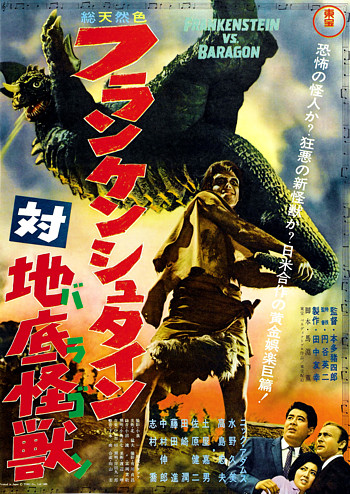 Film Poster of Frankenstein Conquers the World, 1965, directed by Ishiro Honda, within which a Japanese monster, Kaiju fights Frankenstein. The film is also know as Frankenstein vs. Baragon. Image: IMDb.
Film Poster of Frankenstein Conquers the World, 1965, directed by Ishiro Honda, within which a Japanese monster, Kaiju fights Frankenstein. The film is also know as Frankenstein vs. Baragon. Image: IMDb.Japan’s elite are now very aware of the importance of the nation’s place in the world, and take great pains to constantly evaluate where Japan sits within the global hierarchy. Few nations have managed to successfully and deliberately isolate themselves for hundreds of years from the rest of the world, as Japan did during its Edo Period.
This may go some way in explaining why Japanese leaders have been reluctant to follow other countries and import cheap foreign labour. The idea of coexisting with homegrown robots programmed to do what’s asked of them will certainly appeal to most Japanese households, and will no doubt seem to some a more attractive proposition than resorting to immigration.
Japan’s latest ‘Geopolitical Complex’, something Japan has not had to face for a very long time, concerns ‘China’s Return to Greatness’ and the shift from having a neighbour-complex, when it very felt superior to most of the nations surrounding it, to one bordering on inferiority. The implications of all this remain very unclear.
That said, as in most countries, the average Japanese person thinks and acts locally, ignoring global power games until they affect them. They have enough to contend with, struggling to coexist with nature’s power in the form of earthquakes, storms and volcanoes. And in this respect, of course, technology provides essential assistance and protection. That is its point.
Japan’s media’s constant use and creation of new terms, such as, Lolita Complex and Peter Pan Syndrome, to name just two, move the fear of technology down the increasingly long list of things Japan has to worry about. But imagined and real shocks – not to mention monsters, do still raise their ugly head, often from the sea, or from overseas.
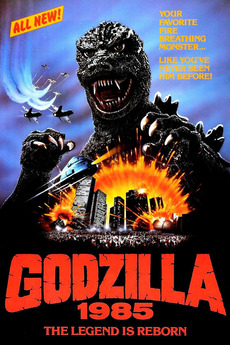 Promotional poster for 16th Godzilla film, directed by Koji Hashimoto , released in Japan in 1984 as The Return of Godzilla.
Promotional poster for 16th Godzilla film, directed by Koji Hashimoto , released in Japan in 1984 as The Return of Godzilla.This prehistoric dinosaur, awoken and transformed by atomic fallout from American nuclear testing, represented a plethora of Japanese fears. The film may well have been cathartic for some – allowing them to see Japanese crisis management and planning in action.
The original film was launched just two years after the occupation of Japan ended in 1952, following the atomic bombs and Japan’s surrender. Japan was now able to take control of rebuilding its economy and infrastructure. It was also the year in which a Japanese tuna fishing boat was contaminated by nuclear fallout from American nuclear testing near the Marshall Islands.
The 16th Godzilla film released in 1984 is one of the most popular. It returned to the original theme of nuclear weapons. According to Teruyoshi Nakano, who was responsible for the film’s special effects, this was because: ‘they were forgetting how painful it had been. Everyone in Japan knew how scary nuclear weapons were when the original movie was made, but it wasn’t like that in the 1980s…We decided to remind all those people out here who had forgotten.’
Literature and film do help us understand deep cultural attitudes and to some extent, the mood of a nation. However, societies including Japan, are much more complex and fragmented than the national media channels will have us believe.
To simplify and exaggerate is an old journalistic technique that works brilliantly in our social media age. It also works very effectively when applied to Japan; making great headlines, amplifying differences and projecting Japan’s image of oddness. Japan’s unique lack of robophobia is a case in point.
-
-
- The Inflection Point: Authors become robots and robots become authors
-
I
n 2016, a group of researchers at a Japanese university decided to build an android based on a dead celebrity. Not because they felt they might be infringing the intellectual property rights of a living celebrity, but simply because they wanted to commemorate an important anniversary. The celebrity in question was the author Natsume Soseki and the anniversary was the centenary of his death. To make him realistic they scanned the novelist’s death mask using 3-D imaging and recorded the voice of his grandson to develop synthetic speech designed to resemble the author’s voice as closely as possible.
Soseki, one of Japan’s most revered authors, well known for his novels I am a Cat (1905) and Botchan (1906), as well as spending a very unhappy two years in the United Kingdom, can now give lectures on Japanese literary history and recite extracts from his novels written over a hundred years ago. He has even been featured on 1,000 yen notes.
Besides promoting sales of his books and perhaps generating royalties for his grandson, he will, according to his engineers, contribute to research into human robot co-existence.
Japanese researchers and engineers are also working on new technology to cure a problem that has existed for generations: writers-block.
A group of software engineers have created an AI powered algorithm designed to write (perhaps generate is a better word to use here), short stories – thereby relieving authors who have run out of good ideas; generating new works on behalf of dead authors, or just creating AI authored content for us to enjoy.
The researchers submitted the fruit of their labours to the short story literary awards, the Hoshi prize set up in 2013, named in honour of the author Shinichi Hoshi (1926-1997). Hoshi is one of Japan’s best-known science fiction writers, and penned the highly acclaimed short-tale about a robot waitress Bokko-chan in the 1960s.
The award is consciously open to all possible authors – whether they be computer, alien, robot or human. It deliberately employs such wide criteria to help expand the concept of science fiction, making the award itself an embedded part of the genre.
The AI that authored the short story made the initial screening, generated huge international publicity, but didn’t make the shortlist. It had some very stiff competition. The title of its short story was a tad predictable and unimaginative: The day a computer writes a novel (Konpyuta ga shosetsu wo kaku hi).
Ironically, the Hoshi prize’s first winner was a male human named Shinichi Endo, whose prize-winning story was written in the style of an academic article written by three advanced AIs, in the year 2064.
It has taken a long journey to reach this point. A journey that can be traced back to 17th-century mechanical dolls. But this inflection point has not yet become what some now refer to as the point of technological singularity, when artificial super-intelligence leads to runaway technological growth, changing our society beyond recognition.
But change is coming. Four of the world’s six largest industrial robot makers are Japanese. And with high levels of employment, an ageing and shrinking workforce, automation and robot research will continue to increase in Japan, with limited resistance.
Indeed, many welcome the march of the Japanese robots as the solution to Japan’s economic and demographic problems. Automation, after all, is even cheaper than outsourced Chinese or Vietnamese labour.
For this reason alone, the march of the Japanese robot writers will continue. New robot narratives and authors will undoubtedly emerge – the best of them almost certainly being Japanese and human.
Japan will still be able to show off its robot prowess at the Tokyo Olympics in 2020 and beyond. And if there’s one other thing we can be sure of, it’s this: Japan won’t see a sudden surge in robophobia.
-
-
-
- Is Japan’s robot culture unique?
-
-
R
obots, like dolls, are everywhere in Japan. There are robot hotels and robot restaurants and robots regularly feature in all of Japan’s creative industries. Robots, like Honda’s ASIMO, are now used as a tool for international diplomacy. It is a narrative that is easy to report, and one many wish you to see or read – making the whole subject something of a self-fulfilling prophesy. 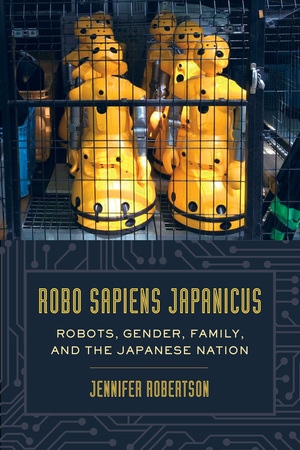 Robo Sapiens Japanicus:
Robo Sapiens Japanicus:Robots, Gender, Family, and the Japanese Nation by Jennifer Robertson, published by University of California Press in 2017.
Animism, the ancient religious belief that all objects have a spirit, is deep rooted in Japanese culture, and is often cited as a unique reason for Japan’s acceptance of robot co-existence.
Perhaps, it is harder to project and amplify the dangers of a god-like scientist over-stepping the mark, playing creator, in a society, which is not monotheistic. A society where man-made tools, that have served craftsmen and women well, are treated with the kind of respect or reverence one might have for an exceptionally good work colleague or a benevolent ancestor.
Nonetheless, in a country with an official government paper titled: Japan as a Robotics Superpower; and a Ministry of Foreign Affairs which publishes its Japan Brand Program in English on its website, the depth and uniqueness of Japan’s ‘love of robots’ is probably a question worth scrutinizing.
Some argue that fads come and go, and that Japan is much more ambivalent towards robots and technology than we are led to believe.
When technology fails to do what it is designed for: to protect and serve, people start to express what they really think and only then their opinions can be clearly observed and surveyed. It’s also argued that foreigners aren’t actually so robophobic – despite the success of Arnold Schwarzenegger’s film, The Terminator, which casts the robot in a villainous role.
 Cover of Inside the Robot Kingdom: Japan, Mechatronics, and the Coming Robotopia by Frederik L. Schodt originally published in 1988 and reissued in 2011 as an e-book.
Cover of Inside the Robot Kingdom: Japan, Mechatronics, and the Coming Robotopia by Frederik L. Schodt originally published in 1988 and reissued in 2011 as an e-book.The book gives us a broad cultural analysis in which he argues that it is Japan’s flexible ‘anything-that-works-goes attitude’ to religion; and its practical approach to making small improvements, combined with a long history of embracing tools that will defend against external disasters and enemies, that has as much to do with Japan’s readiness to embrace robotics than anything else.
The physicist Michio Kaku explains this practical attitude well: ‘Before someone builds “a super-bad” robot someone has to build “a mildly-bad” robot and before that a “not-so-bad” robot’. Technology is advancing and impressive, but we are still at an early evolutionary stage of robot and AI design. “Super-bad” robots still seem like a horizon event for most people in Japan.
Major Japanese cities have had to be rebuilt multiple times due to manmade disasters and more often natural disasters that insurers in the West would call ‘acts of God’. When Japan has had to respond to such events, it seems to just get on with it without much fuss.
In between periods of massive change or intense rebuilding a natural momentum tends to return, and in these quiet spells people do many things: as well as tinker, build and write. In fact, this now includes restoring Karakuri Ningyo, as interest in them has started to return. Something that would not have been possible without the books published in the 1700s.
Nonetheless, to really understand Japan’s attitude to robots, technology and science, you’ll be well advised to steer clear of engineers, politicians or geeks. Instead take a look at some of the country’s brilliant contemporary literature and robot tales. Produced by a nation that has led most of the world in terms of male and female literacy rates for over a hundred years, it is a very good place to start.
‘From near-vegetarians to avid meat eaters, from wearers of swords to carriers of Walkman’s, from rigid federalists to eager believers of democracy, from arrogant militarists to self-flagellating pacifists, probably no society in the world has undergone so many dramatic, radical changes in so short a time, with so little hesitation and introspection,’ writes Schodt.
Japanese authors continue to imagine alternative worlds and document change; they retell very personal stories; and recount clever and original strategies for coping, or not, with modern life or even future lives. They continue to do what they have always done so well: educate and entertain. Robots and computers may have mastered statistical prediction and pattern recognition, but are still no good at providing most other deep insights.
So is Japan’s robot culture unique? To find out, you’ll need to pick up one of the many brilliant tales from the so-called Robot Nation. You’ll find it a highly entertaining and very worthwhile experience.
© Red Circle Authors Limited
 Photo : Olivier Ezratty Déplacement au Japon en février 2009. Nathalie Kosciusko-Morizet (Wikimedia)
Photo : Olivier Ezratty Déplacement au Japon en février 2009. Nathalie Kosciusko-Morizet (Wikimedia)
